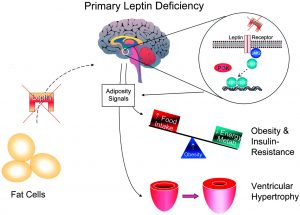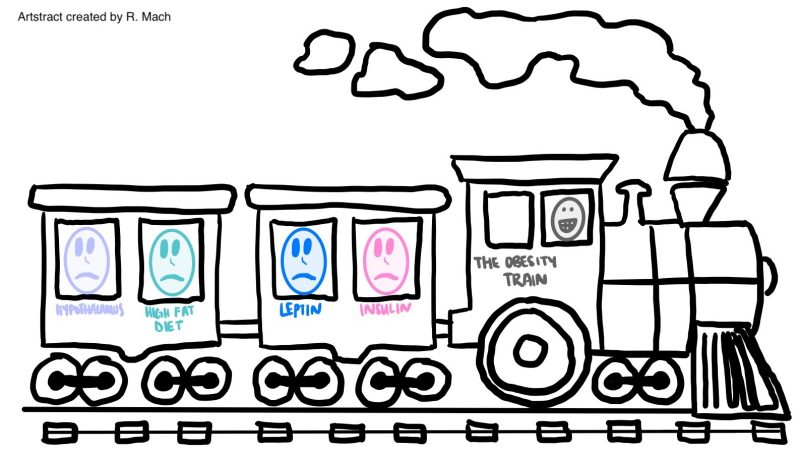All aboard! All aboard! You’ve just purchased your ticket on the Obesity Train, and you have no idea what to expect. Still, you keep a positive outlook, hoping that this train ride will tell you all you need to know about the neurochemistry of obesity. Next stop, the inflammation station!
The Hypothalamus
You’ve just arrived at the train, and it’s time to get your ticket taken. The nametag of the person taking your ticket is “hypothalamus.” You think it’s odd, but you decide to listen to what it has to say. The hypothalamus mentions that it has a vital role in many metabolic and homeostatic functions, including the ever-so important melanocortin system, which binds hormones and controls food intake and energy expenditure. There needs to be a proper balance between food intake and energy expenditure, but this balance is tipped in individuals who are obese. The hypothalamus also tells you that one of its components is UDP, which is able to activate AgRP neurons. In obesity, these UDP levels are elevated, meaning a higher activation of AgRP neurons. This is not ideal, as those neurons will positively regulate feeding behavior. The hypothalamus has one more thing to tell you, which is that it hates inflammation. Hypothalamic inflammatory responses occur in two phases, both of which have harmful effects on the brain and body.
High Fat Diet

You finally reach your seat, thinking of the odd conversation you just had with Hypothalamus. Kind of an interesting character, but it gave you good information nonetheless. Your seat neighbor, though, also seems like a talker. It says its name is “high fat diet” and it wants to tell you about its effects on the body. You decide to hear it out, because what could it hurt at this point! High fat diet (HFD) tells you that the people who succumb to its pressure definitely feel the consequences. An HFD means that the brain has a tougher time telling you when to stop eating, almost constantly craving high-fat foods. This is somewhat of a habit, as once your brain gets used to an HFD, it will not like if you try to go off of it. HFD explains this to you saying it’s a likeable character, but you have a hard time believing it. This does not sound like something you’d want to get yourself into. The HFD wraps up its spiel to you by telling you why it’s on this train—heading to the inflammation station of course! A high fat diet causes activation of proinflammatory cytokines and inflammatory pathways in the hypothalamus. Not exactly good news!
Leptin & Insulin

You head down to the snack bar (in the “basement” of the train – how cool!), trying to escape these odd passengers you’ve talked to so far. There are two little kids in the snack bar, and they tell you their names are Leptin and Insulin. They’re cute kids, but they look very sick. When you ask if they’re feeling okay, they say no. They tell you that typically, they are able to effectively share with one another (suggesting a good balance between the two), but lately they’ve been unable to do so. Considering you’re on the train to the inflammation station, this makes you very nervous. They tell you that they too are not a fan of inflammation, as it causes a disruption in the signaling of Leptin and Insulin. Both of these hormones have crucial signaling pathways, so inflammation is quite detrimental to normal food intake and regulation, which is why it is such an important factor leading to obesity. The figure shown here helps give a visual of the balance between insulin and leptin and what is going wrong.
Last Stop: The Inflammation Station
When you reach the final destination, you come to the realization that inflammation is such a key player in obesity. Each character you talked to had a poor relationship with inflammation, demonstrating that it has widespread negative effects. Still, you feel as though this train ride has given you much to think about and has given you good information on obesity in the brain and body.
